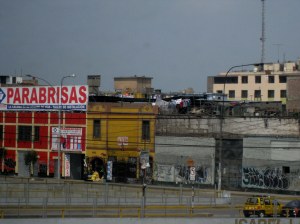All too rarely, airline attendants make an effort to make the in flight “safety lecture” and announcements a bit more entertaining. Here are some real examples that have been heard or reported:
Here is some hilarity to make your evening more enjoyable. After numerous airplane rides, I am definitely very much in favor of a little humor thrown into the routine procedures. Some of these I have heard personally and others are just ones I found. Laugh. Enjoy.
1. “In the event of a sudden loss of cabin pressure, masks will descend from the ceiling. Stop screaming, grab the mask, and pull it over your face. If you have a small child traveling with you, secure your mask before assisting with theirs. If you are traveling with more than one small child, pick your favorite.”
2. An airline pilot wrote that on this particular flight he had hammered his ship into the runway really hard. The airline had a policy which required the first officer to stand at the door while the Passengers exited, smile, and give them a “Thanks for flying our airline.” He said that, in light of his bad landing, he had a hard time looking the passengers in the eye, thinking that someone would have a smart comment. Finally everyone had gotten off except for a little old lady walking with a cane. She said, “Sir, do you mind if I ask you a question?” “Why, no, Ma’am,” said the pilot. “What is it?” The little old lady said, “Did we land, or were we shot down?”
3. On a Southwest flight (SW has no assigned seating, you just sit where you want) passengers were apparently having a hard time choosing, when a flight attendant announced, “People, people we’re not picking out furniture here, find a seat and get in it!”
4. On a Continental Flight with a very “senior” flight attendant crew, the pilot said, “Ladies and gentlemen, we’ve reached cruising altitude and will be turning down the cabin lights. This is for your comfort and to enhance the appearance of your flight attendants.”
5. On landing, the stewardess said, “Please be sure to take all of your belongings. If you’re going to leave anything, please make sure it’s something we’d like to have.
6. “There may be 50 ways to leave your lover, but there are only 4 ways out of this airplane”
7. After a particularly rough landing during thunderstorms in Memphis, a flight attendant on a Northwest flight announced, “Please take care when opening the overhead compartments because, after a landing like that, you better believe that everything has shifted.”
8. From a Southwest Airlines employee: “Welcome aboard Southwest Flight 245 to Tampa.. To operate your seat belt, insert the metal tab into the buckle, and pull tight. It works just like every other seat belt; and, if you don’t know how to operate one, you probably shouldn’t be out in public unsupervised.”
9. “Your seat cushions can be used for flotation; and, in the event of an emergency water landing, please paddle to shore and take them with our compliments.”
10. “As you exit the plane, make sure to gather all of your belongings. Anything left behind will be distributed evenly among the flight attendants. Please do not leave children or spouses.”
11. And from the pilot during his welcome message: “Delta Airlines is pleased to have some of the best flight attendants in the industry. Unfortunately, none of them are on this flight!”
12. Another flight attendant’s comment on a less than perfect landing: “We ask you to please remain seated as Captain Kangaroo bounces us to the terminal.”
13. After a real crusher of a landing in Phoenix, the attendant came on with, “Ladies and Gentlemen, please remain in your seats until Capt. Crash and the Crew have brought the aircraft to a screeching halt against the gate. And, once the tire smoke has cleared and the warning bells are silenced, we’ll open the door and you can pick your way through the wreckage to the terminal.”
14. Part of a flight attendant’s arrival announcement: “We’d like to thank you folks for flying with us today. And, the next time you get the insane urge to go blasting through the skies in a pressurized metal tube, we hope you’ll think of US Airways.”
15. Heard on a Southwest Airline flight. “Ladies and gentlemen, if you wish to smoke, the smoking section on this airplane is on the wing and if you can light ’em, you can smoke ’em.”
16. During the pre-flight safety announcements on Southwest a number of years back, we heard the flight attendant say something like, “For those of you who insist on smoking during this flight, you will be directed toward one of the exits over the wings where you will be shown the movie for today: Gone With The Wind.”
17. Heard on SWA, at the end of the flight, when they were supposed to be putting up their trays:”Ladies and Gentlemen, we hope you’ve been enjoying your drinks. However, the time has come to stop enjoying, and start drinking.”
18. “We’d like to congratulate someone on this plane who is having their 100th birthday, today, and is flying for the very first time. Ladies and Gentlemen, please be sure to wish the pilot happy birthday on your way out of the plane!”

